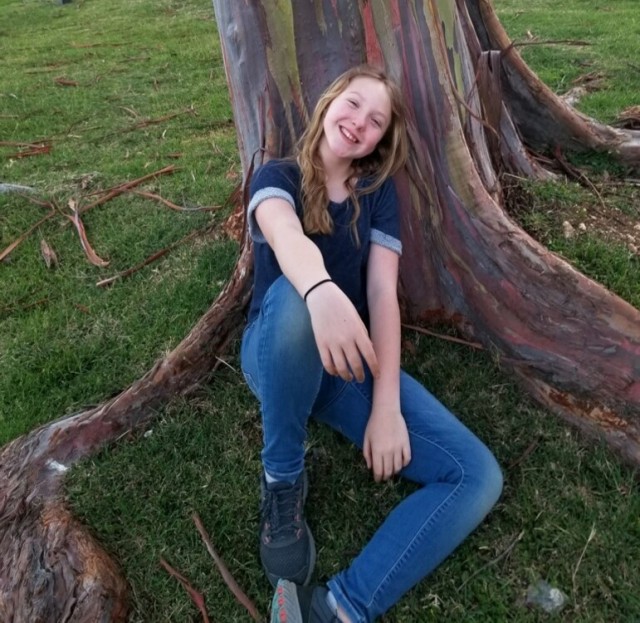TRIPLER ARMY MEDICAL CENTER, Honolulu – In many ways, Mackenzie Boyll is an average 10-year-old. She enjoys running, riding horses, listening to music, and making art.
And on May 10, she was the recipient of the first-ever vertebral body tethering surgery in military medicine.
In March, Mackenzie was diagnosed with scoliosis, a condition characterized by a three-dimensional deformity of the spine, by her primary care provider at Branch Health Clinic Makalapa.
A week later, Mackenzie and her parents met with Lt. Col. (Dr.) Matthew Cage, an Adult and Pediatric Spine Surgeon at Tripler Army Medical Center, to discuss her treatment options.

Jenn Boyll, Mackenzie’s mother, also has scoliosis and is all too familiar with the challenges it presents.
“I have three daughters and know to regularly monitor their backs for signs of curvature. One day I was checking Mackenzie’s back and noticed a curvature so we went to see her primary care doctor,” said Jenn.
When Jenn was a child, her only option was a spinal fusion, a surgical procedure that fuses two or more vertebrae into one bone. Fusion takes away some spinal flexibility and prevents the stretching of surrounding ligaments and muscles.
Vertebral body tethering (VBT) offers an alternative to fusion for patients who have scoliosis curves that are either too large to brace, as in Mackenzie’s case, or have failed brace treatment.
Mackenzie’s spinal curve was originally diagnosed at 47 degrees but aggressively increased to 55 degrees in just two months. She went through a period of rapid growth and the curve grew with her.
“Left untreated, a curve this severe could lead to issues with cardiac and pulmonary function later in life, back pain and psychosocial issues”, said Cage.
The VBT procedure entails placing screws along the spinal curve and placing a rope-like device, called a tether, alongside the vertebrae. When the tether is pulled taut, it can partially correct the deformity and guides the growth of the spine as the body grows.

“Mackenzie is the near-perfect candidate for VBT; with her relative skeletal immaturity and large-magnitude curve, her risk for progression is 100%,” said Cage. “This procedure allows us to correct her spinal deformity while allowing the untethered side of the curve to continue to grow.”
To assist with the surgery, Dr. Rolando Roberto, one of Cage’s fellowship mentors from University of California-Davis Health and Shriner’s Hospital for Children-Northern California, flew in from Sacramento. He has performed multiple tether surgeries on children and has extensive experience with anterior thoracoscopic spine surgery.
“Dr. Cage has been great, he’s made sure Mackenzie’s emotions are OK and that she is involved in the decision-making process,” said Mackenzie’s father, Air Force Master Sgt. Richard Boyll.

While most parents experience anxiety knowing their child will undergo surgery, the Boylls’ minds were put at ease by Tripler’s care team.
“Richard and I have both recently had surgery at Tripler and received a phenomenal level of care at every step of the way,” said Jenn.
Following the procedure, Mackenzie spent three days in the hospital recovering. In six weeks, she should be able to swim and perform light exercise. In three months, doctors said, Mackenzie can return to full activity with no restrictions.

“I’ll be taller, stronger, and faster,” said Mackenzie when asked what she is most excited about after surgery.
While the long term benefits of the tether are currently unproven, it is the hope of patients and doctors alike that this procedure will result in a straight, flexible spine, allowing Mackenzie to continue an active healthy lifestyle.




Social Sharing